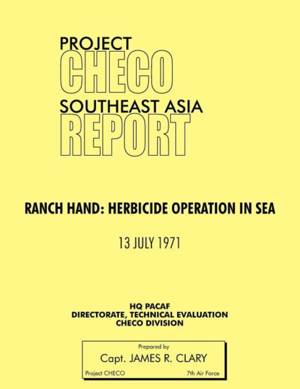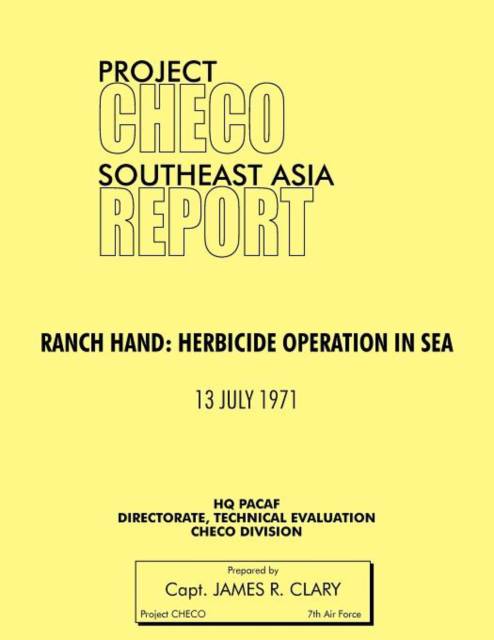
- Afhalen na 1 uur in een winkel met voorraad
- Gratis thuislevering in België vanaf € 30
- Ruim aanbod met 7 miljoen producten
- Afhalen na 1 uur in een winkel met voorraad
- Gratis thuislevering in België vanaf € 30
- Ruim aanbod met 7 miljoen producten
Zoeken
Project Checo Southeast Asia Study
Ranch Hand: Herbicide Operations in Sea
James R Clary, Hq Pacaf Project Checo
Paperback | Engels
€ 40,45
+ 80 punten
Omschrijving
High quality reprint of this recently declassified 1971 study.The primary mission of Ranch Hand was defoliation and crop destruction. Defoliation was directed against enemy strongholds, roadsides, power lines, railroads, and other lines of communication. The objectives were to increase visibility for Forward Air Controller (FAC) and tactical aircraft and to make it more difficult for the enemy to ambush ground forces. Two herbicides were used for. defoliation: Orange, a mixture of 2,4-D and 2,4,5-T chlorophenoxy acids; and White, a mixture of 2,4-D and picloram. Crop destruction was directed at food plots of enemy troops, the objective being to increase their logistics problem. The herbicide used for crop denial missions was Agent Blue, a sodium salt of cacodylic acid. Proposed targets were carefully screened at all echelons. Requests for defoliation and crop destruction were originated by army commanders at or below the province level. The request, when approved by the Province Chief, was sent to the Vietnamese Joint General Staff (JGS). With their approval, it went to Military Assistance Command, Vietnam (MACV) which reviewed specific target areas and operational requirements. A coordination meeting was then held at the province where the final plan was agreed upon. Following this, an operations order was published by the JGS and an execution order issued by MACV. It required approximately six months from the time the request for defoliation was first submitted until the final plan was agreed upon by all levels of command. A second mission of the Ranch was that of conducting airlift operations as directed by higher authority. This was accomplished by removing the spray tanks and spray booms from the aircraft and installing the conveyors and other essential equipment for airlift operations. The conversion, when required, was accomplished in less than 24 hours.
Specificaties
Betrokkenen
- Auteur(s):
- Uitgeverij:
Inhoud
- Aantal bladzijden:
- 146
- Taal:
- Engels
Eigenschappen
- Productcode (EAN):
- 9781780398150
- Verschijningsdatum:
- 17/05/2012
- Uitvoering:
- Paperback
- Formaat:
- Trade paperback (VS)
- Afmetingen:
- 216 mm x 279 mm
- Gewicht:
- 353 g

Alleen bij Standaard Boekhandel
+ 80 punten op je klantenkaart van Standaard Boekhandel
Beoordelingen
We publiceren alleen reviews die voldoen aan de voorwaarden voor reviews. Bekijk onze voorwaarden voor reviews.











